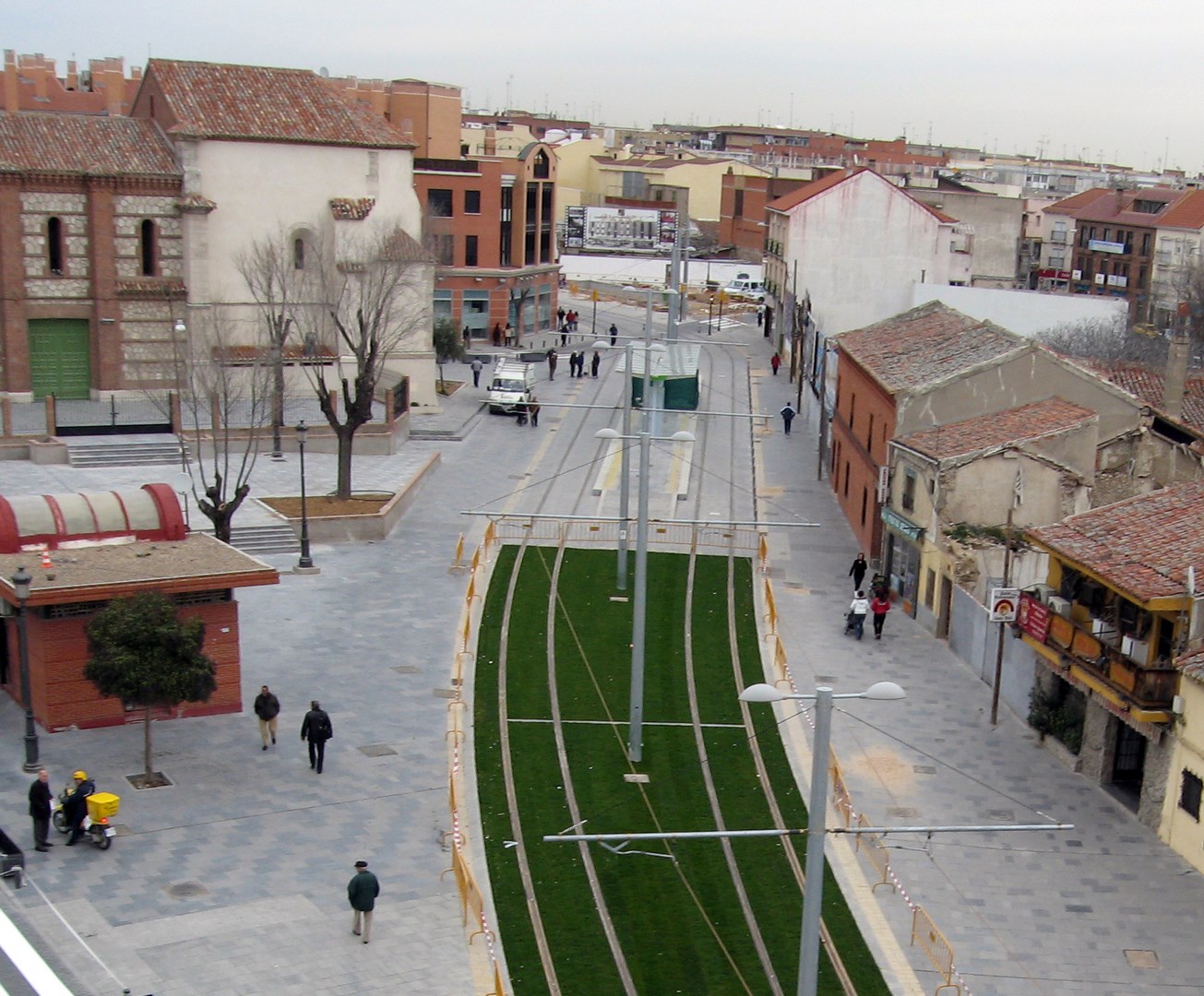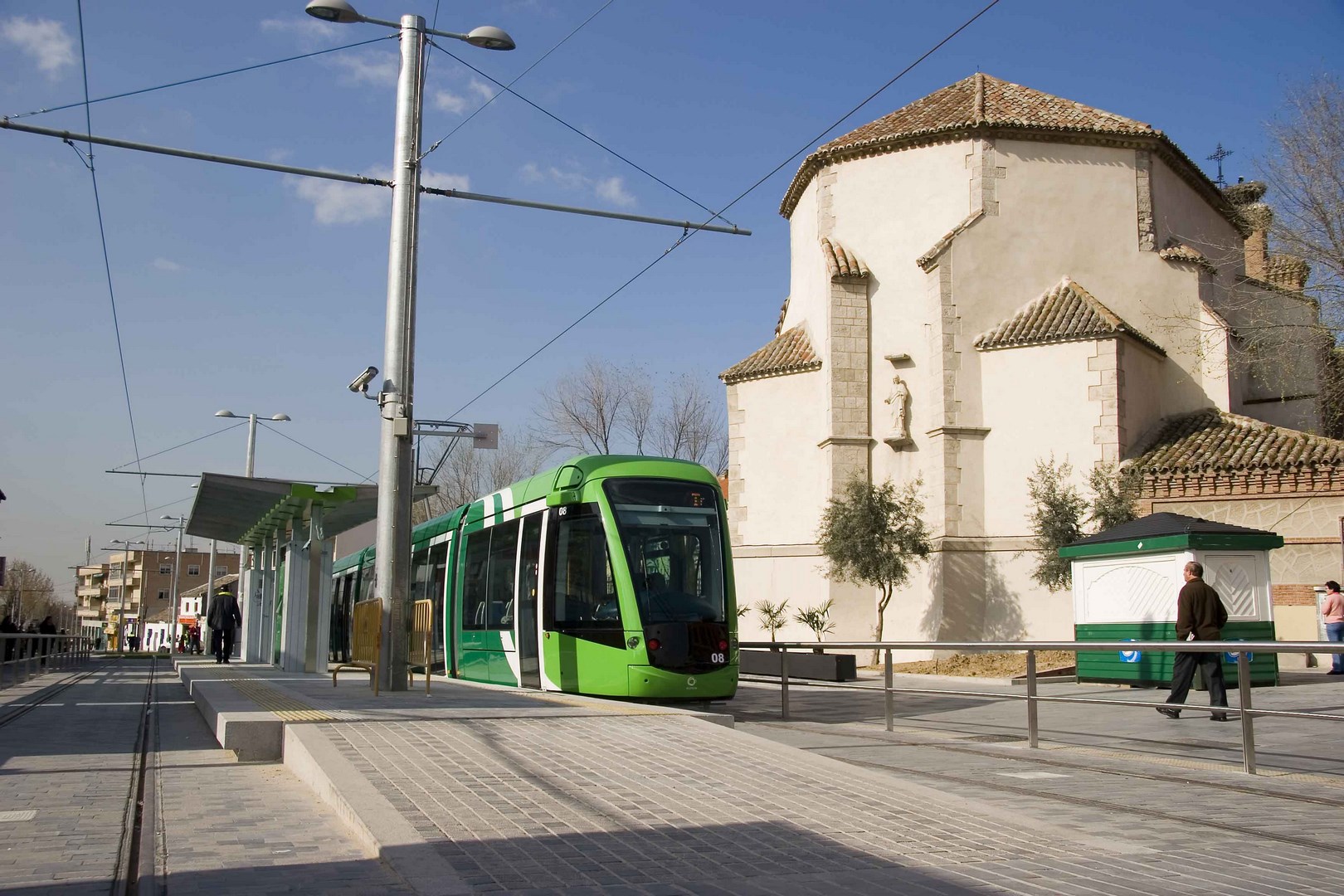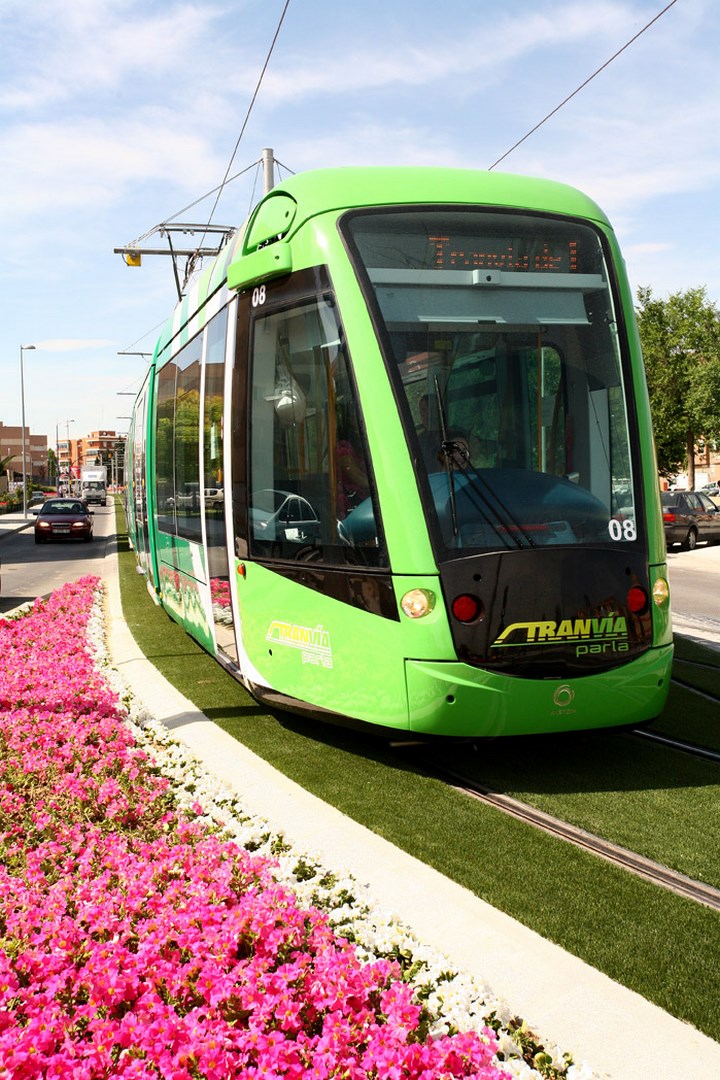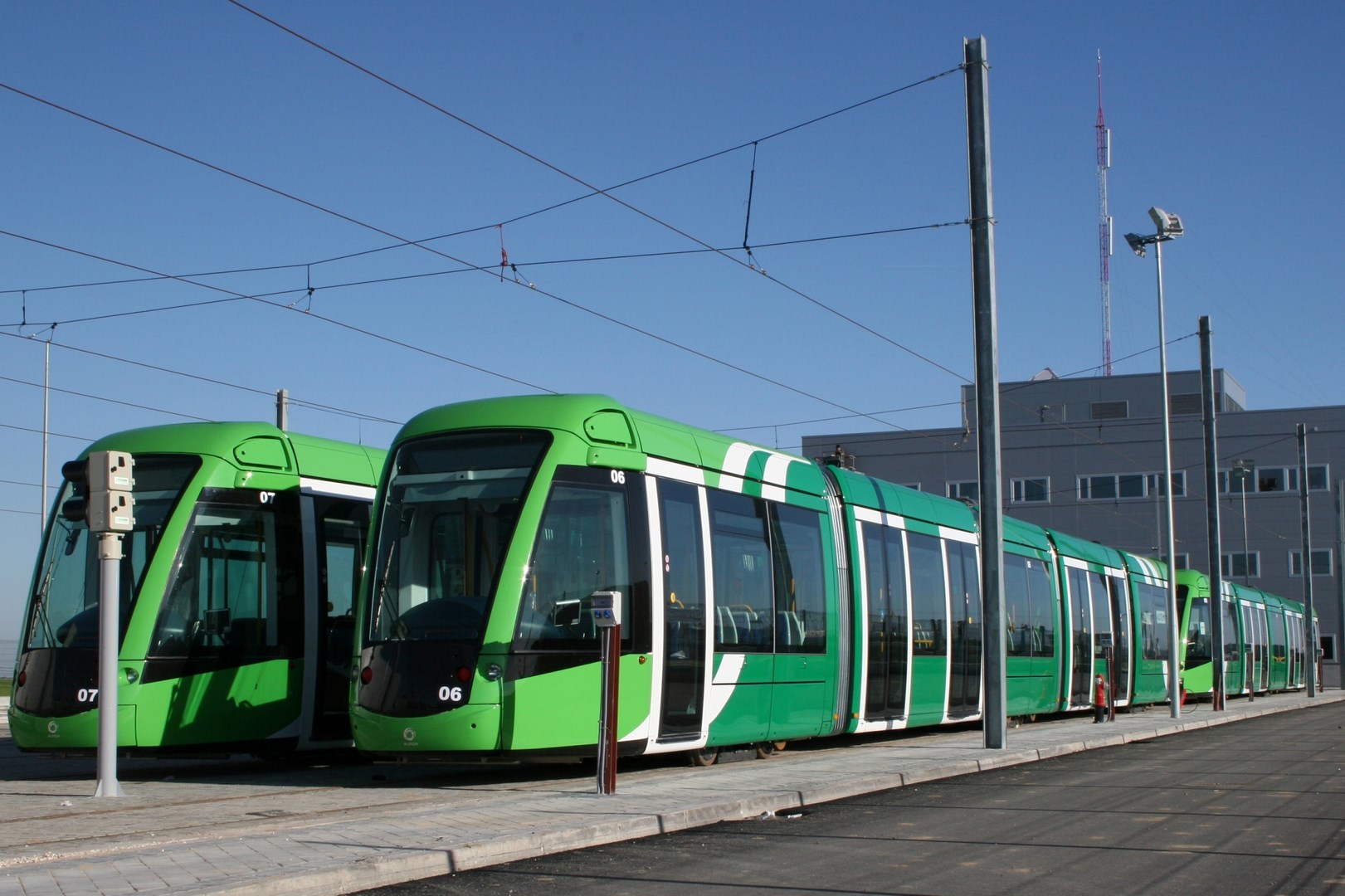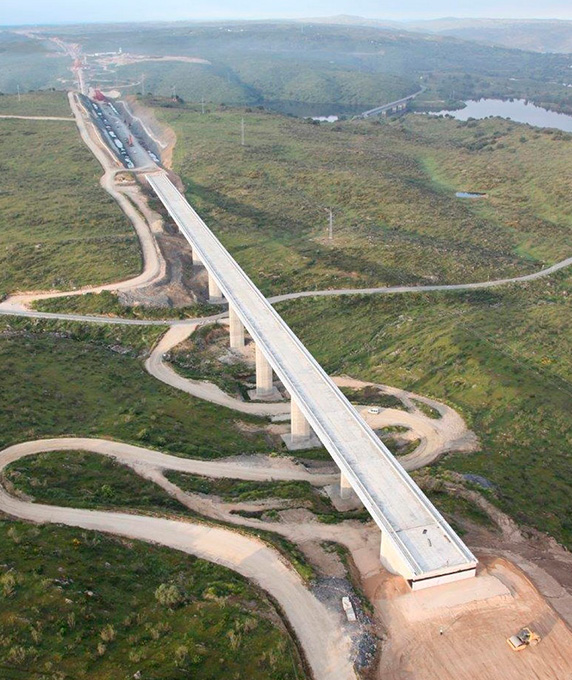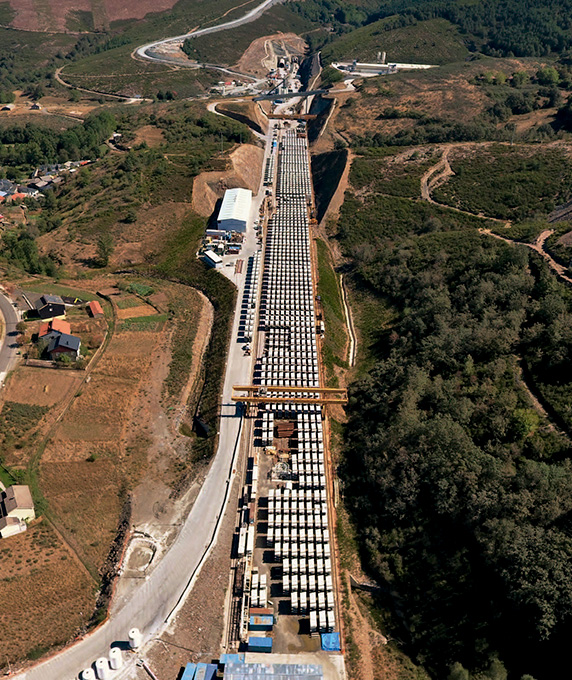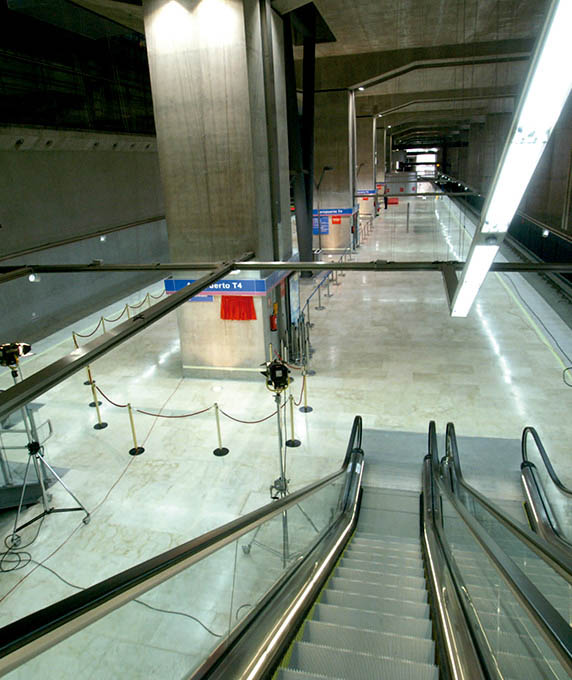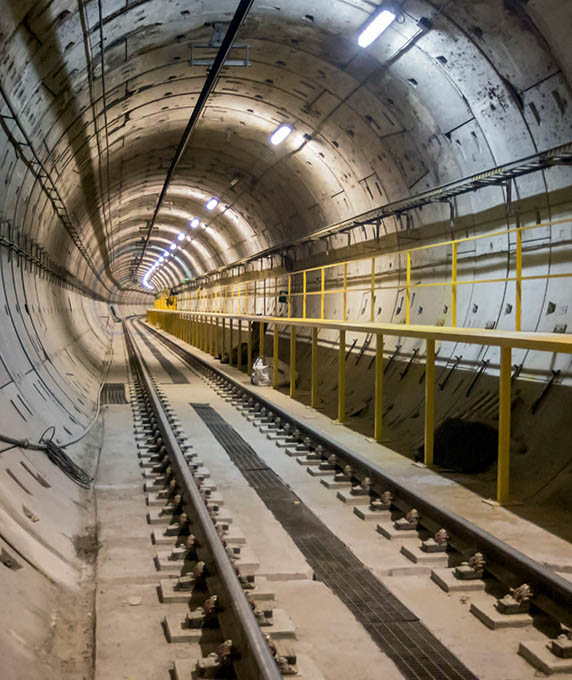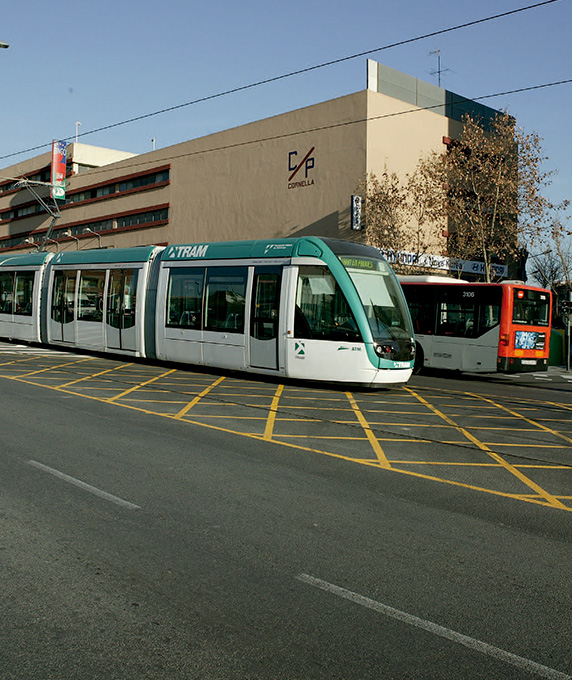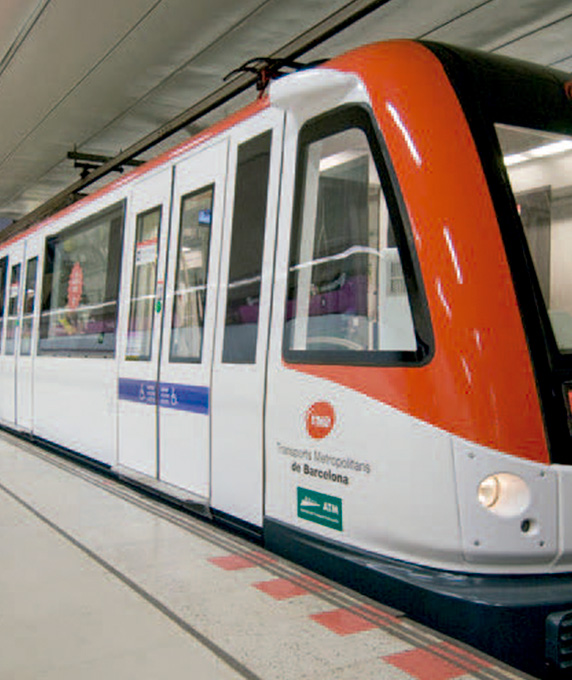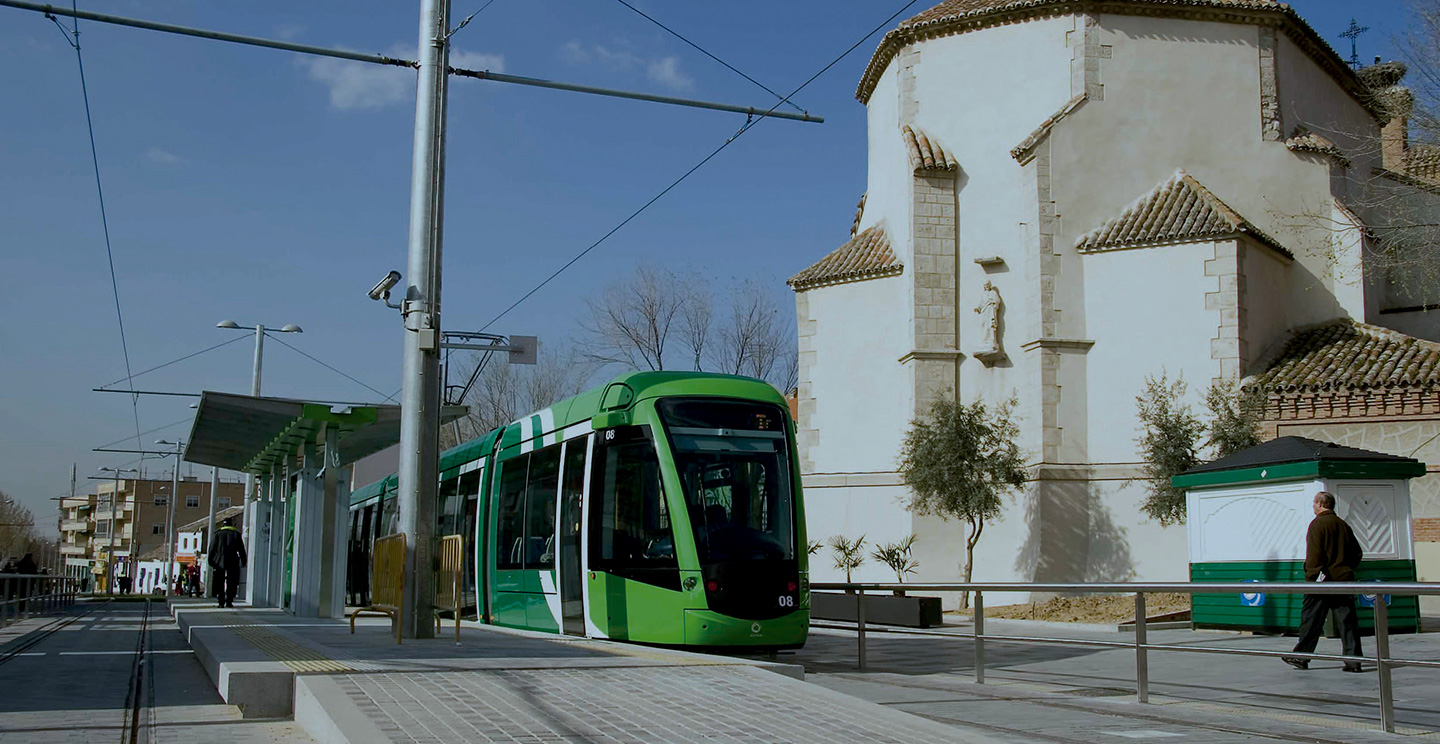
Type of work
Railways
Parla Tram
Spain
8,339 m
long
19
stops
Description
The light railway contract includes project drawing up and works execution, the tram car and system supplies, together with maintenance and operation during forty years.
The Parla Tramway is put forward as a means of transport intended to make communications within the population more flexible and facilitate relations with Madrid. It connects the city centre with the new urban developments in the municipality and facilitates access to hospitals, public centres, sports facilities and commercial areas.
It is a circular surface line that is 8,339 metres long and includes nineteen stops, one of which also connects to the RENFE C-4 local line.
The works were executed in two stages. The first lies within the consolidated urban area (old district) with the construction of 4,244 metres of track with nine stops. 22,500 square metres of tram depots were also constructed, together with an overpass on the M-408, 13,147 square metres distributed over five above-ground "park and ride" lots along the tram route.
The second is within the newly developed Parla-Este urban area, the Cerro del Rubal industrial estate and the non-urban zone. An underpass was constructed under the M-408, together with the urban integration of some of the streets along which the tramway runs (17,000 square metres).
Furthermore, all the stops are constructed approximately 500 metres from the previous one and the service has a timetable that covers from 04:45 until 00:45 every day of the year at a seven-minute frequency at peak hours in order to facilitate connection with RENFE. Almost 80% of the Parla inhabitants will have a stop no more than 400 metres from their homes.
Moreover, the RENFE local services line C-4 station has been remodelled.

The Madrid Community Award to the Most Accessible Transport.
Responsible
This project involves numerous environmental advantages, among which are savings in resources and raw materials, lower CO2 emissions and noise impact reduction.
It was executed in sections in order to maximally reduce disturbance to those living nearby.
Highlights
- This is the first infrastructure of this type to be put into operation in Madrid and the fifth in Spain.
- Advantages to users are speed, safety and environmental integration.
- In addition to the rehabilitation of the streets through which it circulates and replacement of affected services, a series of car parks were built to facilitate mobility.
